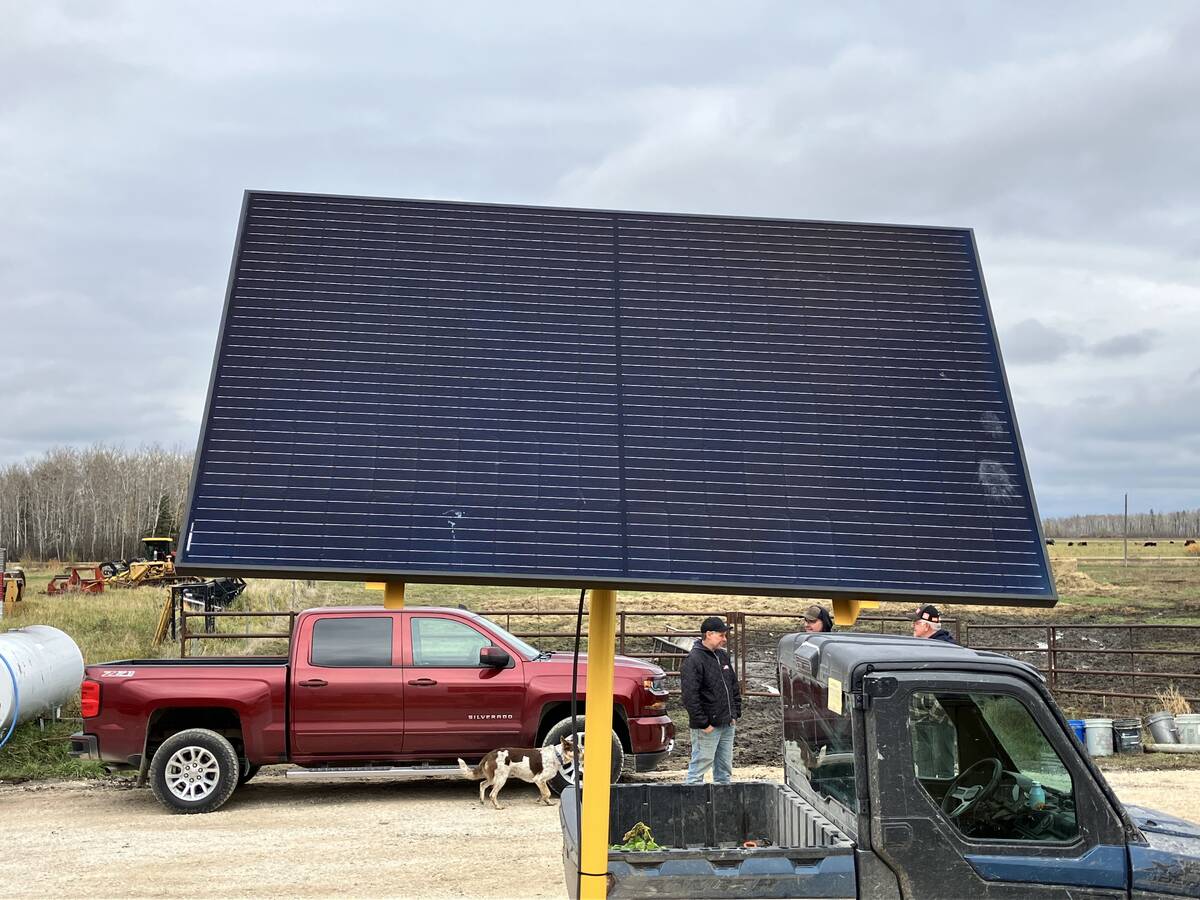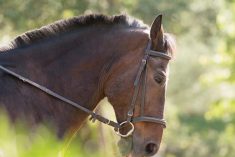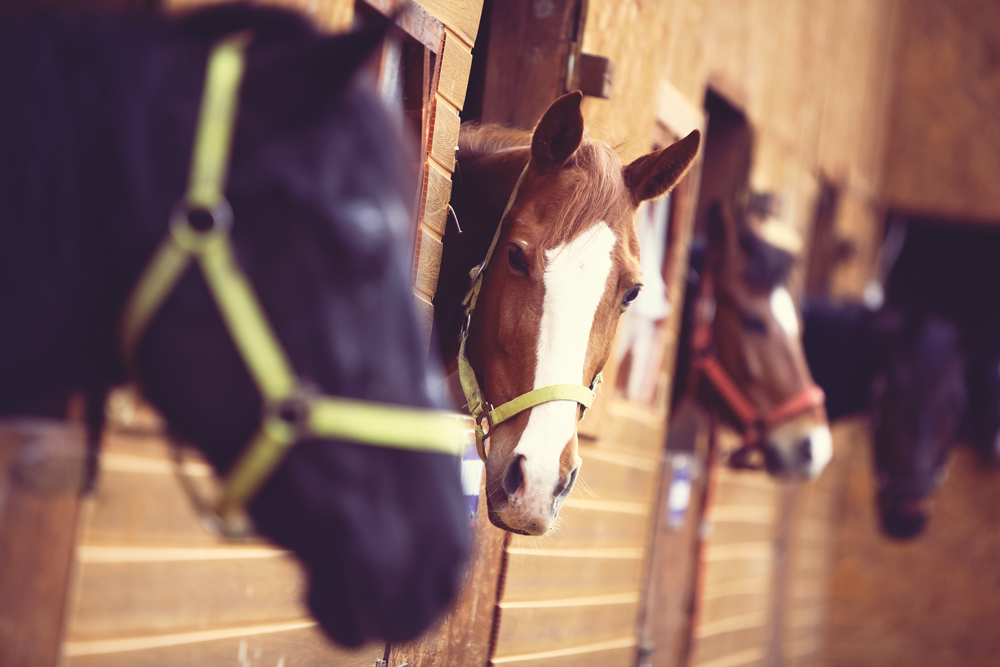It was his first trip to town, and because horses never lie, it showed.
The four-year-old stallion with less than six months of training was jumpy in front of the crowd, neighing loudly, rearing up, and throwing his head around.
For a minute or two, it looked like he might be a handful.
But holding the reins in one hand, horse trainer Neil McLeod waved his arms and forced the nervous mount to take a few steps back. With that, and a few lunging-type circles to burn off excess energy, the stud lowered his head, signalling that he was ready to start paying attention.
Read Also

VIDEO: Watering system a cattle health win
Portable livestock watering system helps Manitoba beef producer combat foot rot cases on pasture.
Some cowboys might scoff that after six months, a horse should be ready for anything, but McLeod advocates a more patient approach.
Introducing his working cowhorse training program to about 100 participants at a workshop at the Royal Manitoba Winter Fair, Brandon-area trainer McLeod said that he devotes the first six months to groundwork, then the next 18 to honing a mount to perfection.
“If you’re not prepared to put a couple of years of training into a horse, somebody else will. And when you go to town and compete against them, they’re gonna kick your butt,” said McLeod, who has trained over 3,000 horses since 1977 at Thunderbird Horse Centre.
STANDING STILL
It may seem obvious, but McLeod said that one often-overlooked stage of training involves teaching the horse to stand with all four feet perfectly still. That degree of discipline is critical for trimming hooves, shoeing, clipping and grooming, saddling, and most importantly, mounting.
A horse that won’t stand still is telling the trainer that he needs more work, he added. Ignoring the problem is a case of the trainer telling the horse that such behaviour is acceptable, even though it clearly isn’t.
“Every time that I get on him, I want to make sure that he does not walk forward. I want to feel that I can sit here for half an hour if I need to without him moving a foot.”
The rider is the “conductor of the orchestra,” he added, and needs to be in control “all of the time.” For a conductor, that means no French horns bleating out of time, and for a rider, hooves that stay stopped when and where they are told.
Next on the training agenda, said McLeod, is making the horse move forward at the speed dictated to him by the rider.
“I always want to be in charge of the speed,” he said. “Any time he goes a bit faster than what I would choose, I make that a little more difficult.”
MAKING TURNS
Then, McLeod wants to make sure that the horse can go left, then right. The arena fence is a “great tool” for teaching the horse various commands.
Forward motion training can serve double duty, by building endurance and concentration in a mount. Horses in a pasture, for example, although they may run and play, seldom work up a sweat.
“It’s not part of their plan to exercise and get stronger,” he said. “At some point in the future we are going to expect this horse to use all of its muscles and its mind at the very top level.”
A good working cowhorse or ranch horse should be able to go full blast for at least five minutes, he added.
“Conditioning is important, and it should have a purpose,” said McLeod.
A horse that doesn’t perform quite right requires a review process that looks at both the horse and the rider, because odds are that the rider may be making mistakes, too.
“If you’re perfect, then you can start to criticize your horse,” he said. “I always try to go back and check what I am doing.”
GO SLOW
When presenting a new idea to a horse, it’s better to go too slow than too fast. Too slow may waste time, but being too hasty creates “all kinds of problems.”
Another “extremely important” training technique for building suppleness that he uses is to gently pull the horse’s head back on each side over 90 degrees. When the horse learns to release the pressure by arching its head a little further than he is asked, McLeod rewards him by releasing the pressure.
“So, even without moving his feet, he is demonstrating his ability to bend his neck more in this situation than he will ever need to in any exercise or movement when his feet are moving.”
If a horse can’t do that while standing still, he added, it won’t be able to do it at a lope or a trot.
Next up, is teaching the horse that the command “whoa” means just that.
BUILDING IN BRAKES
All four feet must stop, not in five minutes, but “right now,” even with loose reins. He does this by using the arena fence as an obstacle, forcing the issue at the exact moment he utters the word. To reinforce the command, he makes the horse back up a few steps after a full stop. An ounce of pull on the reins should suffice.
Many riders slap a horse on the neck as a reward for good behaviour, but McLeod isn’t sure that they actually appreciate it.
“How do you show your horse that what he just did was OK?” he said. “You can say thank you sometimes by simply doing nothing. Let him catch some air; oxygen is very important.”
McLeod, who has been training horses for 30 years, still goes to at least three clinics per year to learn new tricks.
Playing and fooling around with horses is fine, but a rider needs to be the boss.
“I really believe that people come first. The horse can be a very close second, but I’m not one of these people who thinks that the horse comes first,” he said. “I like to see people stay out of the hospital when they are around their horses.” daniel. [email protected]
———
“Ifyou’renotpreparedtoputacoupleofyearsoftrainingintoahorse,somebodyelsewill.Andwhenyougototownandcompeteagainstthem,they’regonnakickyourbutt.”
– NEIL MCLEOD














